 By Christoph Börsch, B.E.G.
By Christoph Börsch, B.E.G.
Sulzer is a family-run business with 40 employees, and is an established provider of technical engineering services such as planning, consulting and construction management. Headed by Harald Sulzer, the company’s goal is to achieve optimal coordination between the technical trades in order to provide a one-stop source.
The Brief
Having decided that Sulzer needed a new administrative building, its engineering team set some high targets for its construction. The aim was to design a zero-energy building that consumes no more energy than it generates.
The Solution
To achieve this ambitious goal, the latest technology was specified for all areas. The building has a solar-powered system and a heat pump to generate energy, and mechanical ventilation using heat recovery. Instead of using a traditional south-facing orientation for its photovoltaic system, Sulzer opted for east-west, because although this achieves a lower overall yield, it ensures that electricity is generated for as long as possible during the day.
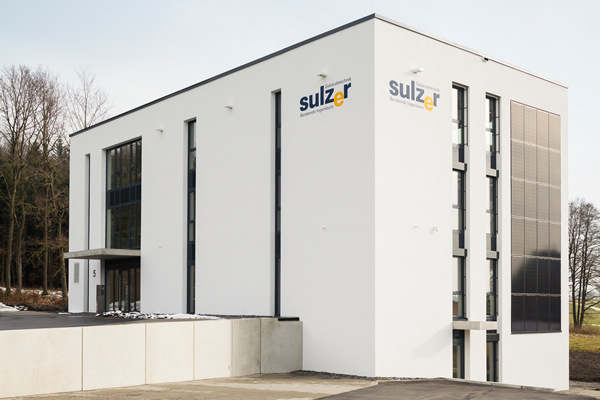
To save energy, the building uses a KNX system for intelligent lighting control in order to optimise electricity consumption, since lighting alone can account for a large proportion of the total energy used in buildings. The KNX system also integrates heating, ventilation and shade control.
Supplementing Natural Light
All luminaires in the office building are equipped with modern LED technology, and high demands were placed on the KNX lighting control. One of the main challenges was to provide mixed light control, whereby artificial light is drawn upon only as required, in order to maintain a given light value at the workplace as daylight fades.
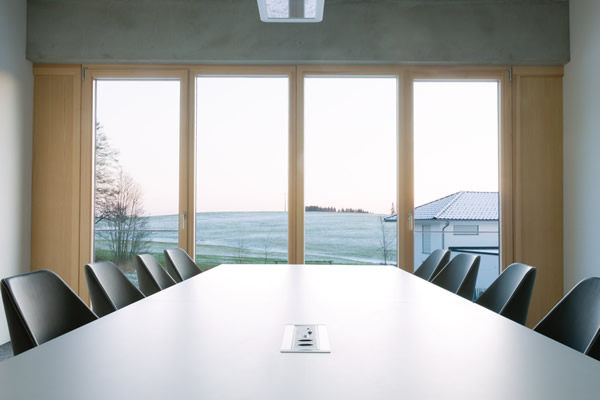
For the implementation, the engineers searched for presence detectors which provide light measurement capabilities that go far beyond standard expectations. They settled on a solution from the B.E.G. generation 6 range of KNX presence detectors. These not only offer highly-accurate integrated light measurement, but an additional external light sensor which can be adjusted independently of the actual detector. This then allows detection of movement over the movement area/desk, as well as sensing the light level in the darkest area of the room. Together with other components, these presence detectors form an energy-efficient control system in all areas of the Sulzer administration building.
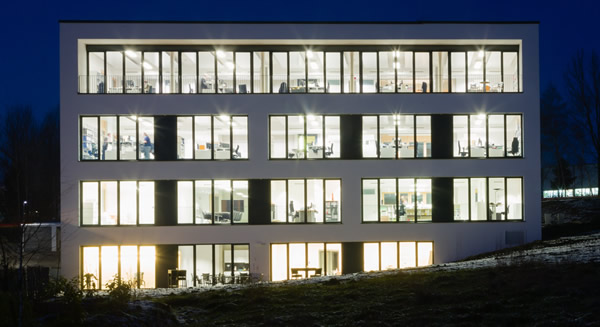
In the individual offices, lighting is activated via a button on the door, and a B.E.G. PD11-KNX presence detector regulates the lighting intensity in the room to 500 lux. Measuring just 0.85mm high, it is nearly invisible on the ceiling, but it reliably detects even the smallest movements. Depending on natural light levels, the detector ensures that only as much artificial light is used in order to reach 500 lux. If no occupancy has been detected for ten minutes, it switches the lighting off. The room temperature and shading are controlled manually via a separate control unit at the door.
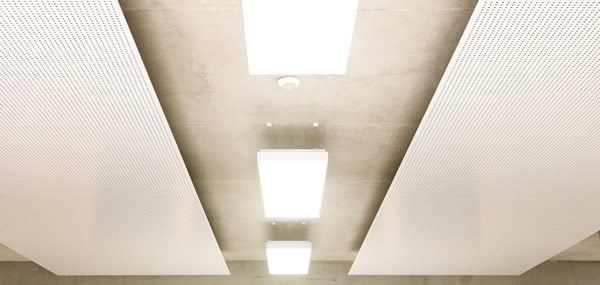
User Control
In the open-plan offices, software was installed on employees’ computers to allow them to activate the KNX lighting control system. Presence detectors, in this case the B.E.G. PD2-KNX, then take over the daylight-dependent control using the same parameters as in the individual offices. Shading in the open-plan offices is also operated via the software.
In the hallways and stairwells, B.E.G. PD4-KNX presence sensors automatically switch the lights on when movement is detected. These were chosen because they cover a wide range of areas thanks to their large detection range. In areas that tend to be occupied only occasionally, such as the technical rooms and storage rooms, motion detectors without a KNX connection were installed.
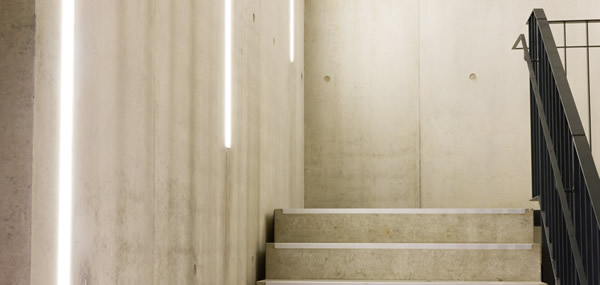
External Lighting
The overall lighting concept also included the outdoor area. The façade is illuminated with five LED spotlights at the second-floor level, so that the company logo is widely visible. At ground-floor level, the entrance areas are, once again, illuminated separately to ensure safe passage in the dark. In order to conserve energy here as well, the outdoor area is covered by four B.E.G. RC-plus-next external motion detectors. Thanks to 360° creep protection, the detectors ensure that no unauthorised person can approach the building without being noticed.
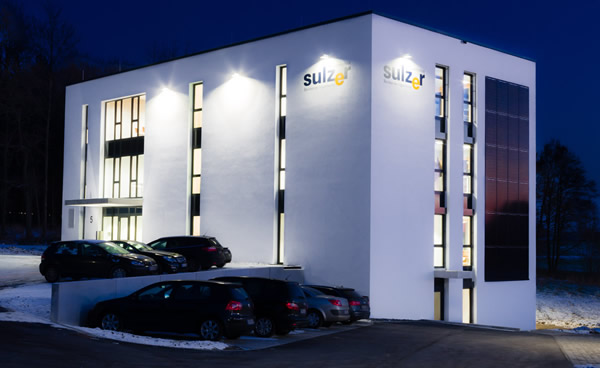
A KNX touchpanel is installed centrally in the entrance of the building. This allows you to see, at a glance, whether all of the windows in the building are closed and whether there is still an employee in the building. In addition, the touchpanel allows the lighting, shading and temperature to be operated for each individual room in the building.
Conclusion
KNX is a global standard for building control, and is implemented by more than 400 manufacturers worldwide. This gives companies such as Sulzer the flexibility to choose the right products, such as B.E.G. presence detectors, for the job, with the confidence that they meet the highest technical and operational standards.
Having KNX infrastructure in place allows Sulzer to control the heating and lighting of its entire building via any terminal, such as an iPad, PC, iPhone, or tablet, whilst allowing the zero-energy performance of its administrative building to be monitoried at any time. Indeed Sulzer is so proud of its new administrative building, that all values from its energy generation and consumption are displayed in real time at http://ibsulzer.eu/unser-firmengebaeude/
Christoph Börsch is the KNX Product Manager for B.E.G. Brück Electronic GmbH. B.E.G. is an expert in lighting control, with a focus on products, such as motion and occupancy detectors, for energy saving in buildings.












